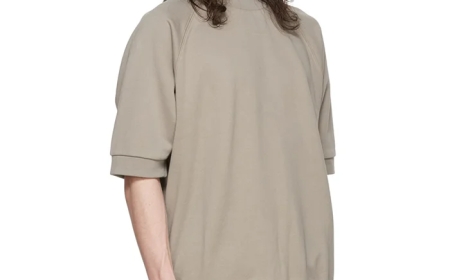How to plan a solo trip to Omaha
How to Plan a Solo Trip to Omaha Planning a solo trip to Omaha, Nebraska, may not be the first destination that comes to mind when thinking of American travel, but it’s a city rich in culture, history, and unexpected charm. Nestled along the Missouri River, Omaha offers a compelling blend of Midwestern hospitality, world-class museums, vibrant food scenes, and quiet urban escapes—perfect for trave
How to Plan a Solo Trip to Omaha
Planning a solo trip to Omaha, Nebraska, may not be the first destination that comes to mind when thinking of American travel, but it’s a city rich in culture, history, and unexpected charm. Nestled along the Missouri River, Omaha offers a compelling blend of Midwestern hospitality, world-class museums, vibrant food scenes, and quiet urban escapes—perfect for travelers seeking authenticity without the crowds of major metropolitan hubs. Whether you're a seasoned solo adventurer or stepping out on your first independent journey, Omaha provides a safe, accessible, and deeply rewarding experience. This guide walks you through every essential step to plan a memorable, stress-free solo trip to Omaha, from initial research to final departure, with practical advice, expert tips, and real-world examples to ensure you make the most of your time in this underrated gem.
Step-by-Step Guide
Step 1: Define Your Travel Purpose and Interests
Before booking a single flight or hotel room, take time to reflect on why you’re traveling solo to Omaha. Are you drawn to its art scene? Its culinary innovation? Its historical landmarks? Or perhaps you simply crave solitude and space to recharge? Defining your purpose shapes every subsequent decision.
Omaha is known for several distinct experiences: the Joslyn Art Museum, the Henry Doorly Zoo and Aquarium (ranked among the top zoos in the world), the Old Market district with its cobblestone streets and artisan shops, and the historic Durham Museum housed in the former Union Station. If you’re a foodie, Omaha’s steakhouses and craft breweries are legendary. For nature lovers, the Bob Kerrey Pedestrian Bridge and Lauritzen Gardens offer serene outdoor escapes.
Write down three core interests you want to prioritize. For example: “I want to experience Omaha’s food culture, visit at least two major museums, and spend one full day exploring nature.” This clarity will help you allocate time efficiently and avoid burnout.
Step 2: Choose the Best Time to Visit
Omaha has four distinct seasons, each offering a different vibe. The ideal time to visit depends on your preferences for weather, crowds, and events.
Spring (April–May) brings mild temperatures (50–70°F) and blooming gardens. It’s an excellent time to visit Lauritzen Gardens and enjoy the city without summer crowds. May also hosts the Omaha Film Festival, a must for indie cinema lovers.
Summer (June–August) is peak season. Temperatures average 80–90°F, and the city comes alive with outdoor concerts, farmers markets, and the famous Omaha Pride Festival. While lively, summer can be humid and busy—book accommodations and popular dining spots well in advance.
Fall (September–October) offers crisp air, vibrant foliage, and fewer tourists. The Great Plains Zoo hosts “ZooBoo,” a family-friendly Halloween event, and the Old Market is buzzing with seasonal pop-ups. This is arguably the most comfortable season for solo exploration.
Winter (November–March) is cold, with temperatures often below freezing, but Omaha’s indoor attractions shine. The Henry Doorly Zoo’s Desert Dome and the Durham Museum remain warm and inviting. Winter also means lower hotel rates and fewer crowds—ideal for introverted travelers seeking quiet reflection.
For most solo travelers, late May to early June or mid-September to early October are optimal—pleasant weather, manageable crowds, and full access to attractions.
Step 3: Set a Realistic Budget
Solo travel doesn’t have to be expensive, especially in Omaha, where the cost of living is significantly lower than in coastal cities. A moderate budget for a 3–5 day trip ranges from $600 to $1,200, depending on accommodation choices and dining habits.
Break down your budget into categories:
- Accommodation: $70–$150/night. Boutique hotels in the Old Market, budget motels near I-80, or Airbnb options in residential neighborhoods offer variety.
- Food: $30–$60/day. Omaha is famous for its steaks—expect $25–$40 for a quality cut at a classic steakhouse. For budget meals, try local diners, food trucks, or grocery stores like Hy-Vee for picnic supplies.
- Attractions: $20–$50 total. Many museums offer free admission days or discounted solo rates. The Henry Doorly Zoo costs $25 for adults; the Joslyn Art Museum is free year-round.
- Transportation: $10–$30/day. Omaha’s public transit (Metro Transit) is affordable ($2 per ride), but renting a car or using rideshare apps like Uber/Lyft gives more flexibility for solo travelers.
- Contingency: $100–$150. Always set aside funds for unexpected opportunities or emergencies.
Use free budgeting apps like Mint or Google Sheets to track spending daily. Avoid overspending on souvenirs—Omaha’s best memories are experiences, not trinkets.
Step 4: Book Accommodations Strategically
Where you stay affects your safety, convenience, and overall experience. For solo travelers, location is paramount.
Best neighborhoods for solo travelers:
- Old Market: The heart of downtown, packed with restaurants, bars, and boutique shops. Safe, walkable, and lively even after dark. Recommended for first-time visitors.
- Downtown: Near the Durham Museum and the Omaha Performing Arts Center. More urban, with modern hotels and easy access to public transit.
- Midtown: A quieter, residential area with tree-lined streets and local cafes. Ideal if you prefer peace over nightlife.
- Omaha Airport Area: Only consider if your flight arrives late or departs early. Avoid staying here unless necessary—limited amenities and no charm.
Look for accommodations with 24-hour front desk service, secure entry, and positive reviews mentioning safety and cleanliness. Platforms like Booking.com and Airbnb let you filter by “Solo Traveler Friendly” or “Safe Neighborhood.” Read recent reviews carefully—look for comments like “felt safe walking back alone at night” or “staff was helpful and welcoming.”
Consider booking a room with a small kitchenette. Preparing a simple breakfast or snack saves money and gives you control over your schedule.
Step 5: Plan Your Daily Itinerary with Flexibility
A solo trip thrives on spontaneity, but structure prevents wasted time and decision fatigue. Create a loose daily framework—not a rigid schedule.
Example: A 4-Day Omaha Solo Itinerary
Day 1: Arrival & Immersion in the Old Market
- Check into hotel by 3 PM
- Walk the cobblestone streets of the Old Market—browse art galleries, antique shops, and local boutiques
- Enjoy dinner at The Drover (iconic Omaha steakhouse) or a casual bite at The Beer Market
- Evening stroll along the Missouri River, view the illuminated Bob Kerrey Pedestrian Bridge
Day 2: Culture & History
- Morning: Visit the Joslyn Art Museum (free admission)
- Afternoon: Explore the Durham Museum (former Union Station, $15 admission)
- Evening: Attend a live performance at the Omaha Performing Arts Center or enjoy a craft beer at Zipline Brewing Co.
Day 3: Nature & Wildlife
- Full day at Henry Doorly Zoo and Aquarium ($25, opens at 9 AM)
- Don’t miss the Desert Dome, Lied Jungle, and the Butterfly and Insect Pavilion
- Afternoon: Walk through Lauritzen Gardens (free entry, donations welcome)
- Dinner at The Grey Plume (farm-to-table, highly rated by locals)
Day 4: Reflection & Departure
- Breakfast at The Coffee Spot (local favorite)
- Visit the Durham Museum’s “Omaha: A City of Firsts” exhibit
- Stop by the Omaha Children’s Museum (even adults enjoy it) for a nostalgic moment
- Departure
Always leave one afternoon open. Solo travel is about presence, not ticking boxes. If you fall in love with a bookstore in the Old Market or meet a friendly local at a coffee shop, allow yourself to linger.
Step 6: Arrange Transportation Within the City
Omaha is a car-friendly city, but you don’t need to rent one to enjoy it fully. Public transit is reliable, affordable, and safe for solo travelers.
Public Transit (Metro Transit):
Bus routes cover downtown, the Old Market, the zoo, and major shopping areas. Download the Metro Transit app for real-time tracking. A 24-hour pass costs $5.50. Buses run from 5:30 AM to midnight on weekdays, with reduced service on weekends.
Rideshare (Uber/Lyft):
Available throughout the city, especially in the evening. A ride from downtown to the zoo costs about $12–$15. Use rideshares for late-night returns or when carrying heavy bags.
Biking:
Omaha has over 100 miles of bike trails, including the Missouri River Trail. Bike rentals are available at the Bob Kerrey Pedestrian Bridge and at local shops like Omaha Bike Co. Perfect for solo travelers who enjoy active exploration.
Walking:
Most downtown attractions are within a 1–2 mile radius. Wear comfortable shoes. Omaha sidewalks are well-maintained and lit at night.
Pro tip: Download Google Maps offline for Omaha. Cell service can be spotty in some areas near the river or in older neighborhoods.
Step 7: Prepare for Safety and Solo Travel Comfort
Safety is a top concern for solo travelers. Omaha is statistically safer than many U.S. cities of similar size, but awareness is key.
- Share your itinerary: Send your daily plans to a trusted friend or family member. Use apps like Life360 or Google Maps location sharing for real-time updates.
- Carry minimal cash: Most places accept cards. Use a money belt or hidden pouch for essentials.
- Stay aware of surroundings: Avoid distractions like headphones in unfamiliar areas after dark.
- Know emergency numbers: Dial 911 for police, fire, or medical emergencies.
- Trust your instincts: If a situation feels off, leave. Omaha’s locals are friendly, but you’re the best judge of your comfort level.
Consider packing a small personal safety device—a portable alarm or a keychain LED flashlight. These are lightweight, legal everywhere, and can provide peace of mind.
Step 8: Pack Smart for Omaha’s Climate and Activities
Omaha’s weather can shift quickly. Pack layers.
Essentials:
- Comfortable walking shoes (broken in before departure)
- Light rain jacket or compact umbrella
- Modest clothing for museums and religious sites (no strict dress codes, but respectful attire is appreciated)
- Reusable water bottle (Omaha has many refill stations)
- Portable charger (phone use for maps and photos is constant)
- Small daypack for museum visits and park excursions
- Medications, copies of important documents, and a physical map as backup
Don’t forget: Omaha is known for its dry winters and humid summers. Pack moisture-wicking fabrics in summer and thermal layers in winter. A scarf and gloves are essential from November to February.
Best Practices
Embrace Solitude, Don’t Fear It
Solo travel is often misunderstood as loneliness. In Omaha, solitude becomes a gift. Sit in a quiet corner of the Joslyn Art Museum, observe the brushstrokes of a Nebraska landscape painting. Have coffee alone at a window table in the Old Market and watch locals go about their day. Write in a journal. Read a book under a tree in Lauritzen Gardens. These moments are the soul of solo travel.
Engage with Locals—Politely and Openly
Nebraskans are famously friendly. A simple “How’s your day going?” to a barista or shopkeeper can lead to unexpected recommendations—like the best hidden-gem taco truck near 72nd and Dodge, or the local’s favorite spot to watch the sunset over the river.
Use open-ended questions: “What’s something most tourists miss here?” or “Where do you go when you want to get away from the city?” You’ll often receive heartfelt, authentic answers.
Practice Digital Minimalism
Limit social media scrolling. Your trip isn’t for likes—it’s for lived experience. Set phone usage boundaries: check messages only twice a day. Use your camera intentionally—capture moments that move you, not just ones that look good.
Keep a Travel Journal
Write down your thoughts, observations, and emotions. What surprised you? What did you learn about yourself? A journal becomes your most valuable souvenir—a private record of growth, curiosity, and quiet triumphs.
Respect Local Culture and Rhythm
Omaha moves at a steady, unhurried pace. Don’t rush. Dinner might not start until 7 PM. Shops close at 7 PM on weekdays. Sundays are quiet. Embrace this rhythm—it’s part of Omaha’s charm.
Stay Hydrated and Nourished
Midwest summers are humid. Winters are dry. Drink water constantly. Pack healthy snacks—nuts, fruit, protein bars—to avoid energy crashes. Omaha’s food scene is generous, but you don’t have to overeat. Savor, don’t stuff.
Plan for Quiet Time
Even the most extroverted solo travelers need downtime. Schedule at least one hour each day for stillness—meditate in your hotel room, nap after lunch, or simply sit in a park and breathe. This isn’t laziness; it’s sustainability.
Tools and Resources
Essential Apps for Omaha Solo Travelers
- Google Maps: Offline maps, walking directions, and real-time transit info.
- Yelp: Read recent reviews for restaurants, cafes, and attractions. Filter by “Solo Friendly” or “Quiet Atmosphere.”
- Meetup: Find local events—book clubs, walking tours, or art workshops. A great way to meet people without pressure.
- Omaha Visitors Bureau App: Official city guide with maps, event calendars, and curated itineraries.
- Weather Underground: Accurate local forecasts for Nebraska’s variable climate.
- Spotify: Create a playlist of Omaha-inspired music—think indie bands like The Faint or country artists from the region.
Online Resources and Websites
- VisitOmaha.com: Official tourism site with free downloadable guides, maps, and seasonal event listings.
- Omaha World-Herald Travel Section: Local newspaper with insider tips on hidden spots and upcoming festivals.
- Reddit r/Omaha: Real-time advice from residents. Ask questions like “Where’s the best place to eat alone on a Tuesday night?”
- Atlas Obscura: Features Omaha’s quirky attractions—like the World’s Largest Mosaic or the “Kool-Aid Museum” in nearby Hastings (a 45-minute drive).
- Lonely Planet Omaha Guide: Compact, reliable, and updated annually.
Books to Read Before or During Your Trip
- “The Good Life” by Scott Russell Sanders – A philosophical reflection on Midwestern life, perfect for setting the tone.
- “Omaha: A City of Firsts” by Dan W. Brown – A historical deep-dive into the city’s innovations and cultural milestones.
- “Traveling Alone” by Michael Korda – A classic on the transformative power of solo journeys.
- “The Art of Stillness” by Pico Iyer – Encourages finding peace in solitude, ideal for your Omaha quiet moments.
Local Organizations That Support Solo Travelers
While Omaha doesn’t have formal solo traveler groups, several organizations welcome individuals:
- Omaha Public Library: Hosts free author talks, film screenings, and writing workshops. All are open to the public.
- Omaha Art Alliance: Offers free studio nights and gallery openings. Great for solo art lovers.
- Nebraska Humanities: Organizes public lectures on regional history and culture—often held in accessible, quiet venues.
Real Examples
Example 1: Maria, 34, from Chicago – A Recharge Trip
Maria had just ended a long-term relationship and needed space to breathe. She chose Omaha because it was affordable, safe, and far enough from her usual circle to feel anonymous. She stayed in a small Airbnb in the Old Market, walked everywhere, and spent her mornings sketching in Lauritzen Gardens. “I didn’t talk to anyone for two days,” she says. “Then I sat next to an older man at a coffee shop who asked about my drawings. We talked for an hour. He told me about his late wife and how she loved this city. I cried. But it was the first time I’d cried without feeling broken. Omaha didn’t fix me. It just let me be.”
Example 2: James, 28, from California – A Foodie Adventure
James is a self-described “steak enthusiast.” He flew into Omaha specifically to try 10 different ribeyes across the city. He kept a spreadsheet. “I ate at The Drover, 1001 South, and even a dive bar called The Steak House that no guidebook mentioned.” He met the owner of a craft brewery who invited him to a private tasting. “I didn’t plan that. I just asked if he had any new brews. He said yes, and brought out four samples. That’s Omaha.” He left with a notebook full of ratings and a new appreciation for simplicity.
Example 3: Lena, 61, Retired Teacher – First Solo Trip Ever
Lena had never traveled alone. She worried about getting lost or feeling scared. She booked a guided walking tour of the Old Market through the Omaha Visitors Bureau. “The guide was so kind. She noticed I was alone and made sure I was okay. By day three, I was wandering on my own.” She visited the Durham Museum and spent two hours reading about the history of railroads. “I used to teach history. It felt like coming home.” She returned home with a photo of herself smiling in front of the Union Station clock—and a promise to herself to do it again.
Example 4: Alex, 22, College Student – Budget Solo Escape
Alex saved $800 from part-time work and took a week off to visit Omaha. He stayed at a hostel near the University of Nebraska campus ($35/night), ate at grocery stores and food trucks, and used public transit. He volunteered one afternoon at the Omaha Public Library’s book sorting event. “I met people my age who weren’t on social media. We talked about books. I didn’t realize how much I missed real conversation.” He left with three new friends, a stack of donated books, and a renewed sense of calm.
FAQs
Is Omaha safe for solo travelers?
Yes. Omaha consistently ranks as one of the safest mid-sized cities in the U.S. Violent crime is low, and most neighborhoods—including the Old Market and downtown—are well-lit and patrolled. As with any city, use common sense: avoid poorly lit alleys at night, keep valuables secure, and trust your instincts.
Can I explore Omaha without a car?
Absolutely. The downtown core, Old Market, and major attractions are walkable. Public transit connects key areas, and rideshares are widely available. Renting a car is only necessary if you plan to visit nearby attractions like the Henry Doorly Zoo’s satellite locations or the Platte River trails beyond the city.
What’s the best free activity in Omaha?
The Joslyn Art Museum is free year-round and features an impressive collection of Native American art, European masters, and contemporary works. The Bob Kerrey Pedestrian Bridge offers stunning views of the Missouri River and is open 24/7. Lauritzen Gardens’ outdoor grounds are free to walk through (donations welcome).
Are there good places to eat alone in Omaha?
Yes. The Old Market has numerous bars and cafes with counter seating perfect for solo diners. Try The Coffee Spot for breakfast, The Beer Market for casual lunch, or The Grey Plume for a refined dinner. Many restaurants are accustomed to solo guests and won’t make you feel out of place.
How many days do I need for a solo trip to Omaha?
Three days is ideal for a meaningful experience. You can cover the highlights without rushing. Four to five days allows for deeper immersion—visiting lesser-known museums, taking day trips, or simply enjoying slower mornings.
What should I avoid doing in Omaha?
Avoid assuming Omaha is “boring” because it’s not New York or LA. Its quiet charm is its strength. Don’t skip local eateries in favor of chain restaurants. Don’t ignore the riverfront—it’s the city’s heart. And don’t rush. Omaha rewards patience.
Are there any cultural norms I should know?
Nebraskans are polite, direct, and value honesty. Say “please” and “thank you.” Don’t be surprised if someone strikes up a conversation—it’s normal. Avoid loud or confrontational behavior. Dress modestly in religious or historic sites. And always tip 15–20% at restaurants, even if service feels slow—it’s part of the culture.
Can I find vegetarian or vegan food in Omaha?
Yes. While Omaha is known for meat, the food scene has evolved. The Grey Plume, The Kitchen Table, and The Plant are excellent vegan/vegetarian options. Many steakhouses offer plant-based sides and salads. Don’t hesitate to ask servers for recommendations—they’re happy to help.
Conclusion
Planning a solo trip to Omaha isn’t just about logistics—it’s about intention. It’s choosing to step away from the noise, to wander without a destination, to sit with your thoughts in a city that doesn’t demand your attention but gently offers its beauty. Omaha doesn’t shout. It whispers. In the rustle of leaves at Lauritzen Gardens. In the quiet clink of a fork against a steak plate at a downtown steakhouse. In the smile of a stranger who asks, “Where are you from?” and listens to your answer.
This guide has given you the tools, the timelines, the tips, and the truth: Omaha is not a stopover. It’s a destination. A place where solitude becomes sanctuary. Where you can be alone without being lonely. Where history, nature, and flavor converge in ways that surprise even the most seasoned travelers.
So pack your bag. Book your ticket. Leave your expectations behind. Omaha is waiting—not to entertain you, but to reveal something you didn’t know you were searching for.





















